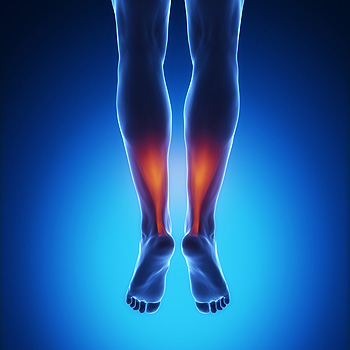
Experiencing pain or swelling in the posterior aspect of the ankle is a sign of Achilles tendon disorder. The Achilles tendon is susceptible to damage since it is the largest tendon with a limited supply of blood and subject to a lot of pressure. The two causes of Achilles tendon disorders are increased activity and aging. The onset of the disorder can be gradual or sudden, but either way, the healing process is lengthy. A medical practitioner does a thorough physical examination and medical history for appropriate diagnosis and Achilles tendonitis treatment plan. When the proper treatment is administered, it leads to full recovery.
Achilles tendon pain
Pain associated with the Achilles tendon often begins with mild pain above the heel or back of the leg after an activity such as running. After some time, you might experience more severe pain after prolonged activity. You might also notice stiffness or tenderness in the morning, which vanishes with mild activity. If you are dealing with Achilles tendon pain, you may want to seek help from a foot specialist. Feel free to contact our office to make an appointment with our podiatrist. Our foot and ankle doctor, Dr. Ejodamen Shobowale will provide you with the care you need to keep you pain-free on your feet.
One of the main symptoms of Achilles tendon disorders is the sore Achilles and buildup of pain. Soreness is noticeable a few centimeters above the heel bone. The lower leg can feel weak, stiff, and slow.
Achilles tendon rupture
If you overstretch, the Achilles tendon might partially or completely rupture. If it is an achilles tendon rupture, you might hear a pop sound followed by an immediate sharp pain at the back of the ankle. Your ability to walk will be affected while some people might get well through nonsurgical treatment, a ruptured tendon can be corrected through surgery.
Achilles tendonitis treatment
A prolonged tendon disorder may require long term treatment or surgery. Seeking treatment right away is very important, but it is crucial to follow the doctor’s instructions for quick recovery. It might take a few months to recover fully from surgery.
Some disorders can go away following proper care, but if you continue putting pressure on the tendon it will take longer to heal. It is important to rest, ice, compress and elevate which is the RICE method.
Rest: whenever possible, avoid pressure on your tendons, sit, or sleep, and you might use crutches for long distances. The injury heals faster if no additional strain is put on the tendon.
Ice: apply ice several times for 15 to 20 minutes a day. This reduces inflammation and swelling fast.
Compression: compress the injury by wrapping an athletic tape or bandage or clothing. The wrapping should not be too tight to limit blood flow.
Elevation: to keep the swelling down, raise your foot above your chest when lying down. Use a pillow or a raised surface to achieve this.
Surgery:
If treatment and other interventions are ineffective, the doctor may suggest surgical intervention, especially if the condition worsens. Depending on the severity of the condition, the doctor might recommend a few surgery options.
In case you fear of complications of Achilles tendon disorder due to severe pain, disabling your ability to carry on normal activity you need to visit a doctor. If you have any questions, please feel free to contact our office located in Houston, TX. Our Houston, TX office can handle all of your foot and ankle issues. We will provide you with the latest diagnostic and treatment methods for treating all foot or ankle related issues.